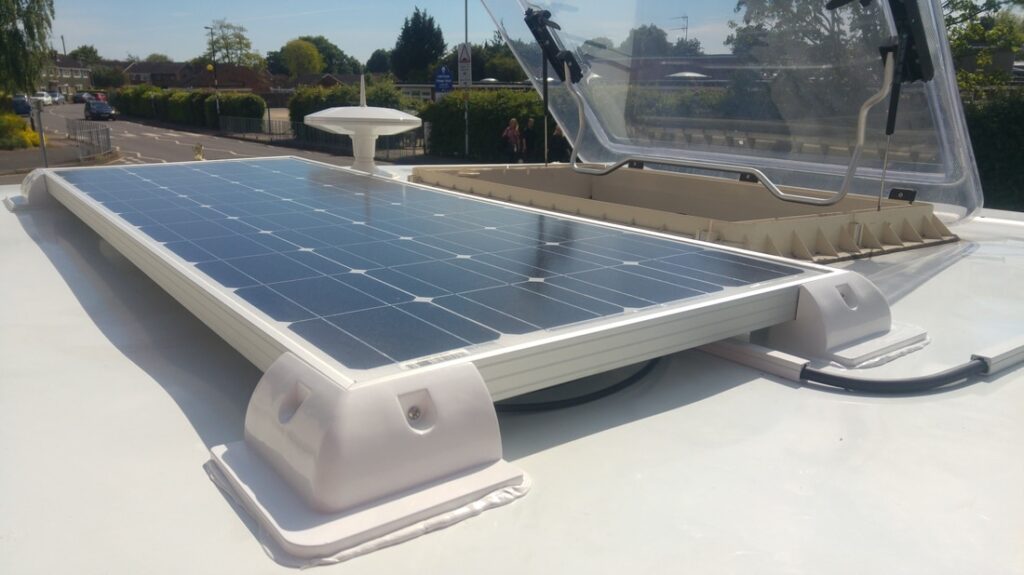Determining How Many Solar Panels You Need for Your RV

Setting up solar power for your RV can feel overwhelming, but breaking down the process makes it manageable. Whether you’re a weekend warrior or a full-time RVer, understanding your energy needs is the foundation of a successful solar setup. If you need hands-on assistance with electrical systems, skilled RV repair technicians in Denton, TX can help ensure your installation is safe and efficient. This guide walks you through evaluating your energy consumption habits, understanding the power requirements of your appliances, calculating daily usage hours, and optimizing your roof space for maximum sun exposure. By following these practical steps, you’ll have a clear roadmap for choosing the right solar setup for your RV adventures.
Assess Your Energy Consumption
Start by evaluating your energy consumption patterns to determine the number of solar panels your RV requires. Calculate the total wattage of all appliances, devices, and systems you plan to power with solar energy. Think about the daily usage hours for each item to estimate the energy consumed. Factor in any energy-efficient upgrades or changes you may make to reduce consumption. Review your average daily energy usage in watt-hours to determine your RV’s total daily energy needs. This assessment serves as a foundation for determining the number of solar panels required to meet your energy requirements efficiently. Understanding your energy consumption is essential for accurately sizing your solar power system to achieve optimal performance.
Determine Your RV’s Power Needs
Understanding your RV’s power needs means getting familiar with the specific electrical requirements of all appliances and devices you intend to operate using solar energy. Begin by listing each item and determining its power consumption in watts. Consider both the continuous power draw and any surge requirements for starting up certain appliances. Remember to account for the total daily usage of each device to calculate the energy needed over 24 hours. Factor in the efficiency of your RV’s inverter and battery system to ensure ideal power flow. Also, think about any future additions to your electrical setup. By carefully evaluating your RV’s power needs, you can accurately size your solar panel system for maximum efficiency.
Calculate Solar Panel Capacity Required
Analyzing your total power consumption and considering the efficiency of your current electrical system helps determine the solar panel capacity your RV needs. To calculate the solar panel capacity needed, determine your daily power consumption in watt-hours. This includes all devices you plan to power using solar. Next, consider the average sunlight hours per day in your location. Divide your daily power consumption by the average number of sunlight hours to determine the minimum solar panel capacity required in watts. It’s advisable to add a buffer of approximately 25% to account for factors like inefficiencies and unexpected power demands. This calculated capacity helps ensure you have sufficient solar panels to meet your RV’s energy requirements efficiently.
Consider Roof Space and Orientation
When planning where to install solar panels on your RV, prioritize maximizing sunlight exposure throughout the day for optimal energy generation. Assess your RV’s roof dimensions and layout to determine how many solar panels can fit. Look for unobstructed areas without shading from roof features like vents or air conditioners. Orienting the panels facing south in the Northern Hemisphere or north in the Southern Hemisphere optimizes sun exposure. Tilt angles also play a key role – align them based on your location’s latitude for maximum efficiency. Consider adjustable mounts for seasonal variations. Calculate the available space versus the number of panels needed to strike a balance. Ensuring a well-thought-out placement enhances the performance of your RV’s solar power system.
Factor in Sunlight Exposure
Optimizing the efficiency of your RV’s solar panel setup means factoring in the amount of sunlight exposure available in the locations where you typically travel. Sunlight exposure plays a significant role in determining the number of solar panels you need. Consider the average number of sunlight hours per day in the areas you frequent. Locations with more sunlight require fewer panels to meet your energy needs. Take into account any shading from trees, buildings, or other obstructions that could reduce the panels’ exposure to sunlight. The angle of your RV’s solar panels can also impact their efficiency. By analyzing the sunlight exposure in your travel destinations, you can more accurately estimate the number of solar panels needed to power your RV efficiently.
Consult With Solar Experts
Seeking guidance from solar experts provides valuable insights into optimizing your RV’s solar panel setup. Solar experts can provide personalized recommendations based on your specific energy needs, the size of your RV, and the appliances you plan to power. They can conduct detailed assessments of your RV’s electrical system, assess roof space for panel installation, and advise on the most efficient panel orientation. By consulting with professionals in the field, you can ensure that your solar panel system is designed to maximize energy production and storage, ultimately enhancing your RV’s off-grid capabilities. These experts can also assist in selecting high-quality components and offer maintenance tips to prolong the lifespan of your solar setup.
Related Topics:

